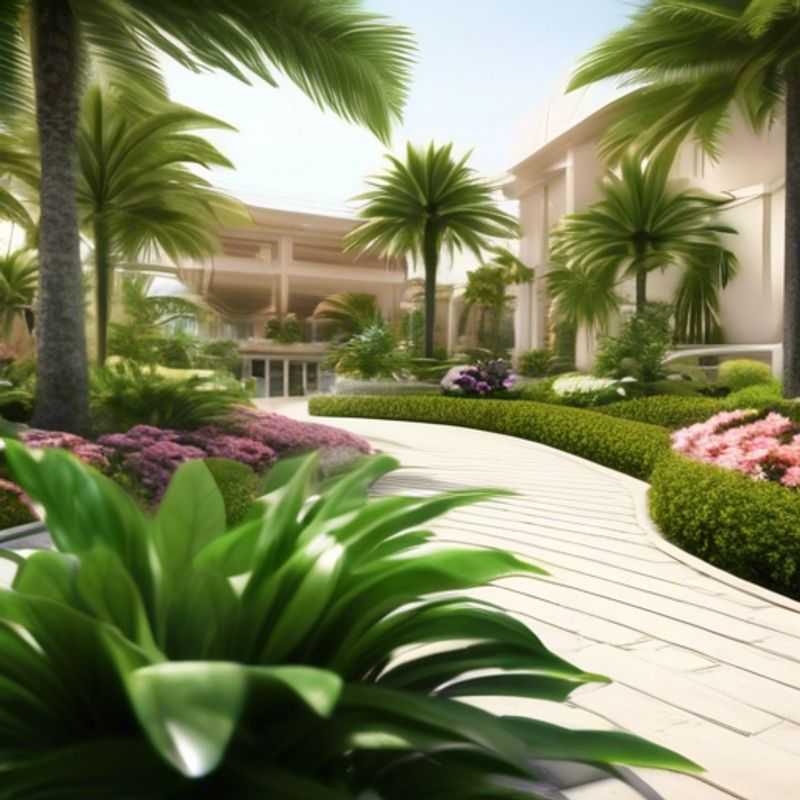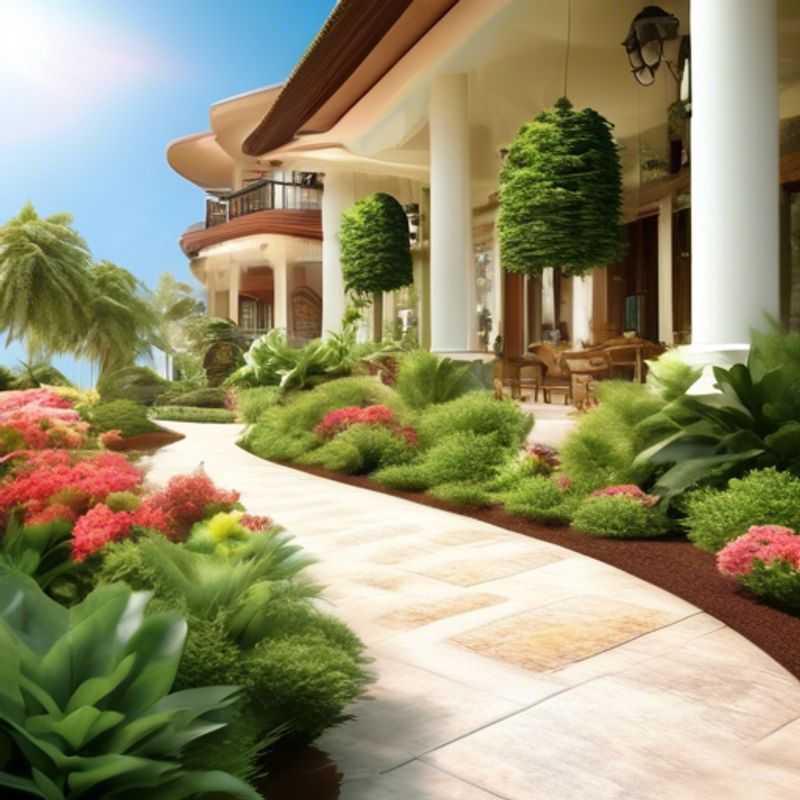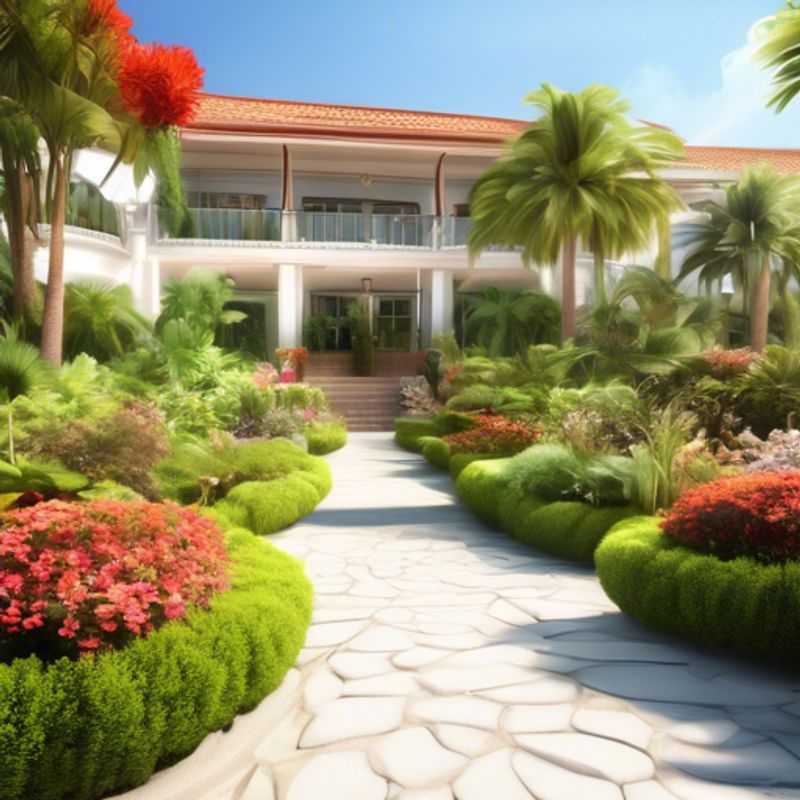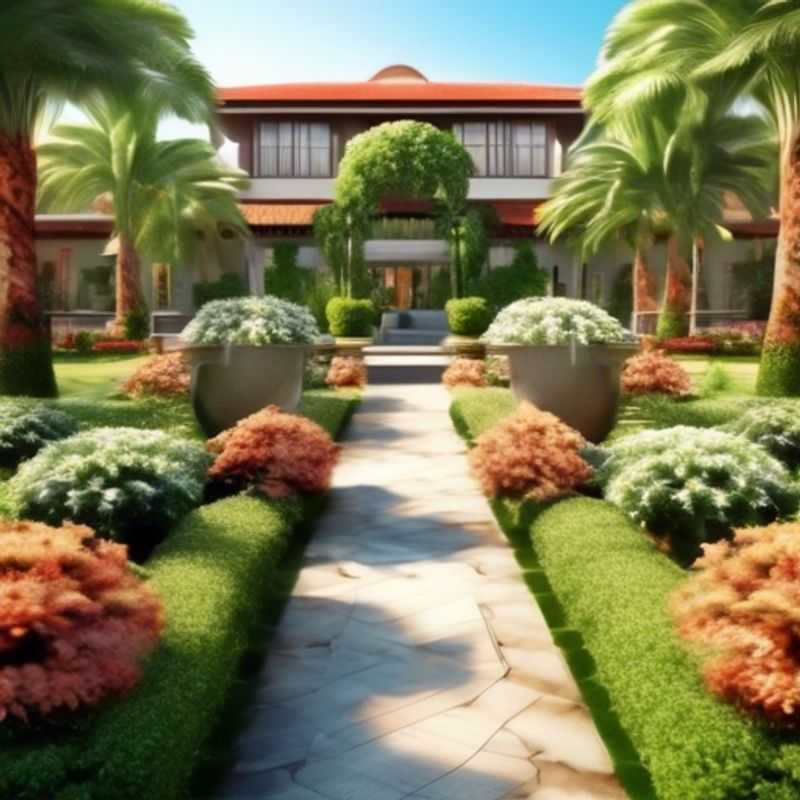Top Things to Know Before Buying the Best Plants for Your Front Yard

Top Things to Know Before Buying Plants for Your Front Yard: Sunlight, Climate, Size, Maintenance, Style, Suitability, and Spacing
Transforming your front yard into a vibrant oasis starts with choosing the right plants. But with so many options available, it can be overwhelming to know where to begin. Fear not, fellow green thumbs! Here's a breakdown of essential factors to consider before you embark on your plant-shopping adventure:
Determine the amount of sunlight the front of your house receives. This fundamental step is crucial for plant success. Different plants thrive in varying amounts of sunlight. Observe your front yard throughout the day to assess sun exposure levels, noting areas that receive full sun, partial shade, or full shade. Armed with this knowledge, you can choose plants that will flourish in their designated spot.
Research the best plant varieties for your climate and sun exposure. No two regions are alike, and your local climate plays a pivotal role in plant selection. Explore plant varieties that are known to thrive in your specific climate and sun exposure. Consider factors like rainfall, temperature extremes, and soil conditions to ensure your chosen plants have the optimal environment to flourish. Consulting with your local garden center or nursery is a great way to get tailored advice for your region.
Consider the mature size of the plants to ensure they fit the space. Tiny seedlings might be adorable now, but they grow! Imagine the majestic grandeur of a fully grown oak tree - a breathtaking sight, but not ideal for a small front yard. Before you fall in love with a particular plant, research its mature height and spread. Make sure it will fit comfortably within your front yard's boundaries without overcrowding or encroaching on walkways or structures.
Prioritize low-maintenance and drought-tolerant plant options. We all have busy lives, and the last thing we want is a plant that demands constant attention. Opt for low-maintenance plants that require minimal watering, pruning, and fertilization. Choosing drought-tolerant varieties, especially if you live in an arid region, will save you time and water while ensuring your plants remain healthy and vibrant.
Look for plants that complement the architectural style of your home. Imagine a modern home adorned with a cottage-garden style. While both can be beautiful, they might create a visual clash. Choose plants that harmonize with your home's architectural style, whether it's modern, traditional, or something in between. Matching your plant choices with your home's style creates a cohesive and visually pleasing landscape.
Ensure the selected plants are suitable for planting in the front yard. Some plants thrive in containers or raised beds, while others are best suited for direct planting in the ground. Make sure the plants you choose are compatible with your front yard's planting environment. For instance, if your front yard has a foundation that restricts root growth, opt for plants that can tolerate such conditions. Consulting with a landscape professional can be helpful in determining the best options for your specific circumstances.
Plan for proper spacing and arrangement of the plants. Avoid cramming your plants together! Proper spacing allows each plant to reach its full potential and receive adequate sunlight and air circulation. Consider creating a visual flow and balance by incorporating varying heights, textures, and colors. Research recommended spacing for your chosen plants and create a planting plan that ensures a visually appealing and well-maintained landscape.

How to Determine the Amount of Sunlight Your House Front Receives
Knowing how much sunlight your house gets can be important for many reasons: from choosing the right plants for your garden to deciding where to place your solar panels. Here's a quick guide to determining the amount of sunlight your house receives, especially focusing on the front of your home.
The Basics:
Start by observing your house throughout the day. Note the times when the sun hits the front of your house, and how long it stays there. Consider the following:
- Sunrise and Sunset: Does the sun shine on your front yard during sunrise and sunset? This can be especially important if you want to maximize morning or evening light.
- Midday: How much direct sunlight does your front yard receive around noon? This will determine how much shade you need, especially if you have plants or furniture you want to protect.
- Seasonal Variations: Keep in mind that the sun's angle changes with the seasons. What you see in the summer might be different in the winter.
Additional Tools for Estimation:
If you want a more precise assessment, there are tools and services available:
- Sun Path Apps: These apps allow you to input your address and see the sun's path across your property throughout the year. Some popular options include SunCalc and Sun Seeker.
- Solar Panel Calculators: These calculators often include a sun analysis feature to help you determine the potential for solar energy on your roof. You can find these online or through solar panel installation companies.
- Professional Solar Assessments: For a comprehensive analysis, you can hire a professional solar energy assessor. They will use specialized equipment to measure the amount of sunlight your roof receives. This is usually a paid service, but it offers the most accurate data.
Knowing how much sunlight your front yard gets is essential for planning various projects. Use the simple observation methods and explore available tools to get a good understanding. If you're seeking precise data or need professional assistance, consider consulting an expert.

Grow Your Green Thumb: Choosing the Right Plants for Your Climate and Sun
Knowing your climate and sun exposure is crucial for choosing the right plants. This ensures your plants thrive and don't struggle. Start by understanding your USDA plant hardiness zone. This tells you which plants can survive the average winter temperatures in your area. You can find your zone online or on a USDA map.
Next, determine the amount of sunlight your garden receives. Plants need varying amounts of sunlight to flourish. Look for plants labeled as full sun (6+ hours), partial sun (4-6 hours), or shade (less than 4 hours).
Once you know your climate and sunlight conditions, research plant varieties that fit those parameters. Consider factors like plant size, bloom time, and maintenance needs. Local nurseries or garden centers can provide excellent advice and recommendations tailored to your region. Don't hesitate to ask for help!

Planting with Purpose: Choosing the Right Plants for Your Space
When designing your garden, consider the mature size of the plants you choose. This ensures that your garden doesn't become overcrowded and your plants have room to thrive.
Plants have different growth habits, some are compact while others spread widely. Knowing how large a plant will grow allows you to plan spacing accordingly. This prevents future problems like plants competing for sunlight and nutrients, or outgrowing their designated space.
You can find information about mature plant sizes on plant tags, online databases, and gardening books. Remember to factor in the height and width of the plant at its full size.
Properly spacing plants will improve the overall health and appearance of your garden. It also minimizes maintenance tasks like pruning and reduces the risk of pests and diseases.

Low-Maintenance and Drought-Tolerant Plants: Your Guide to a Lush, Worry-Free Garden
Prioritizing low-maintenance and drought-tolerant plant options in your landscape can significantly reduce your watering needs and overall maintenance effort. These plants are naturally adapted to survive with minimal water and care, making them perfect for busy gardeners or those living in arid climates. Here are some key considerations for choosing drought-tolerant plants: Choose native plants: Native plants are already adapted to your local climate and soil conditions, making them naturally resistant to drought. Prioritize succulents: Succulents are known for their ability to store water in their leaves and stems, making them highly drought-tolerant. Opt for deep-rooted plants: Deep roots allow plants to access deeper water sources, improving their resilience during dry periods. Group plants together: Grouping similar plants together creates a microclimate that helps retain moisture, reducing the need for frequent watering. Mulch generously: A thick layer of mulch helps retain soil moisture and suppress weeds. Consider xeriscaping: Xeriscaping is a landscaping technique that prioritizes drought-tolerant plants and water-efficient practices. Practice proper watering: When you do water, focus on deep, infrequent watering rather than frequent, shallow watering. This encourages deep root development and promotes healthier plants. By incorporating these practices, you can create a beautiful and sustainable landscape that thrives with minimal effort and water usage.

Curb Appeal: Choosing Plants That Complement Your Home's Architecture
When selecting plants for your home, consider the architectural style to create a cohesive and visually appealing landscape. Different architectural styles lend themselves to different plant types and arrangements.
For example, a contemporary home with clean lines and geometric shapes might benefit from grasses, succulents, or shrubs with structured foliage. A traditional home with intricate details and ornate features could be enhanced by flowering plants, climbing vines, and trees with a graceful silhouette.
Consider the following when selecting plants:
1. Scale and Proportion: Choose plants that complement the size and scale of your home. Large trees can overwhelm a small cottage while dainty flowers might get lost against a sprawling mansion.
2. Texture and Color: Play with different textures and colors to create visual interest. Contrasting textures, such as rough bark against smooth leaves, add depth and dimension.
3. Plant Habits: Consider the growth habits of plants. Vines can be used to cover walls, while cascading plants can soften hard edges.
Remember, selecting plants that complement your architectural style enhances the overall beauty and harmony of your home.

Front Yard Friendly: Choosing the Right Plants for Your Space
Choosing the right plants for your front yard is essential for a thriving, beautiful landscape. Here are some key factors to consider:
Sunlight: Plants need different amounts of sunlight. Make sure you know how much sunlight your front yard gets throughout the day and select plants that thrive in those conditions.
Soil Type: Plants have different soil preferences. Knowing your soil type (e.g., sandy, clay, loam) will help you choose plants that will thrive in your front yard.
Water Needs: Some plants need regular watering, while others are drought-tolerant. Choose plants that match your watering habits or consider an irrigation system if you’re often away from home.
Climate: Consider your local climate, including average temperatures, rainfall, and humidity. Plants should be able to withstand the conditions of your area.
Space: Be realistic about the space available in your front yard. Allow enough room for the plants to grow to their mature size without crowding or becoming too invasive.
Maintenance: Some plants require more maintenance than others. Consider your time commitment and choose plants that you’re able to prune, fertilize, and weed as needed.
Aesthetics: Choose plants that complement the style of your home and create the visual appeal you desire. Consider factors like color, texture, and shape.
Local Regulations: Check with your local municipality about any restrictions on plant types or sizes that might apply to your front yard.
Pest and Disease Resistance: Choose plants that are known to be resistant to common pests and diseases in your area.
Safety: Select plants that are not poisonous to pets or children. Avoid thorny or invasive species that could pose a safety hazard.
You can also get expert advice from local nurseries or gardening centers to make sure you choose the best plants for your front yard.

Plan for Proper Spacing and Arrangement of Plants: A Guide to Garden Harmony
Proper spacing and arrangement of plants is crucial for their healthy growth and overall garden aesthetics. Consider the following when planning your garden layout:
Sunlight requirements: Different plants need varying amounts of sunlight. Ensure to place sun-loving plants in full sun areas and shade-tolerant plants in shadier spots.
Mature size: Allow enough space for plants to grow to their full size. Overcrowding can lead to competition for resources, resulting in stunted growth.
Root systems: Some plants have shallow roots, while others have deep roots. Spacing should account for the root system to prevent them from competing for water and nutrients.
Water needs: Group plants with similar watering requirements together. This helps you manage watering efficiently.
Design considerations: Think about the overall look and feel you want for your garden. Use plants of different heights, textures, and colors to create visual interest.
Spacing guides: There are many online resources and gardening books that offer specific spacing guidelines for various plants. Consult these resources for detailed information on spacing requirements for your chosen plants.
Remember: Proper spacing allows plants to grow to their full potential and contributes to a thriving, beautiful garden.
